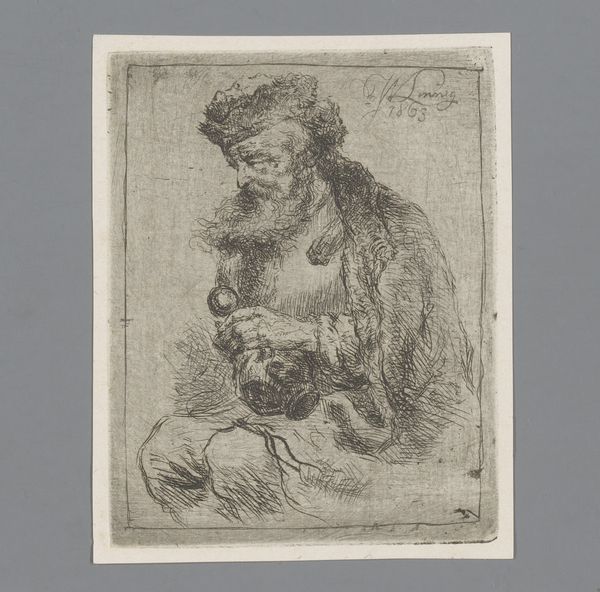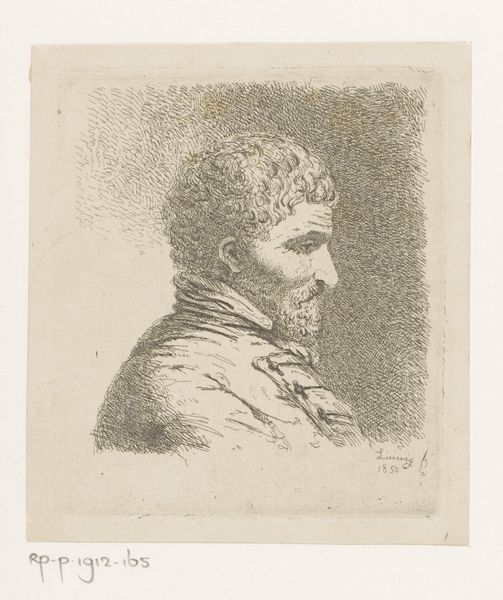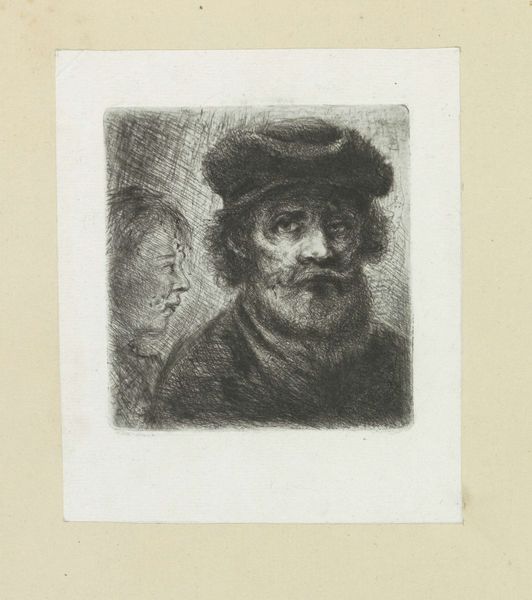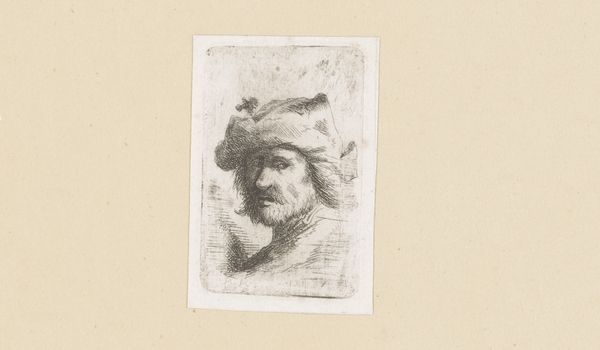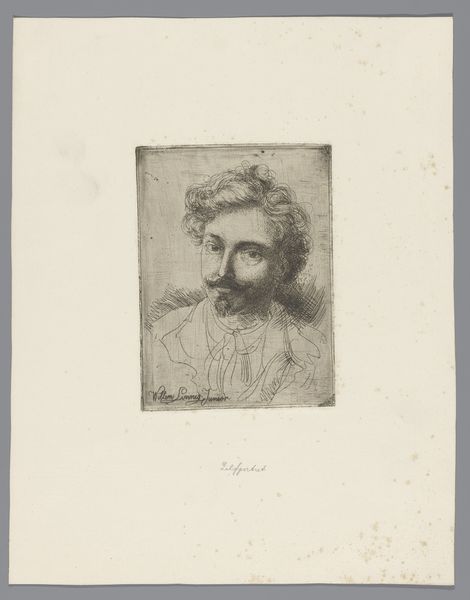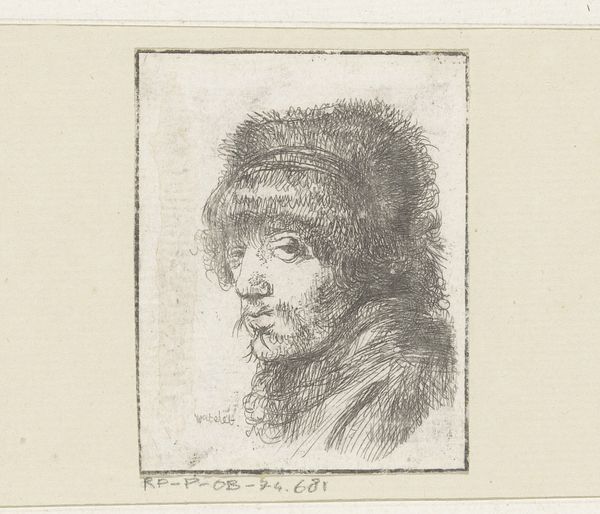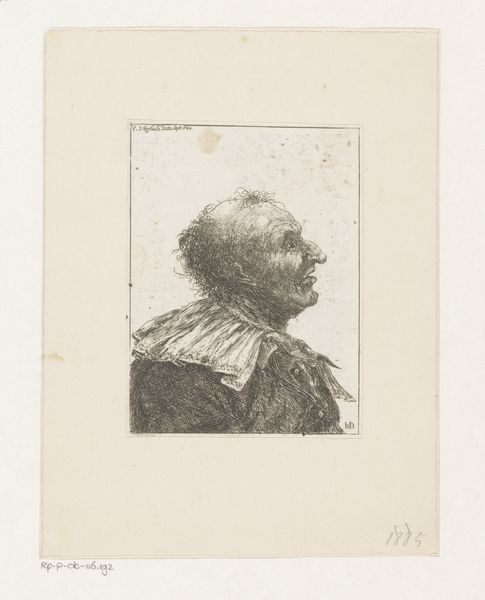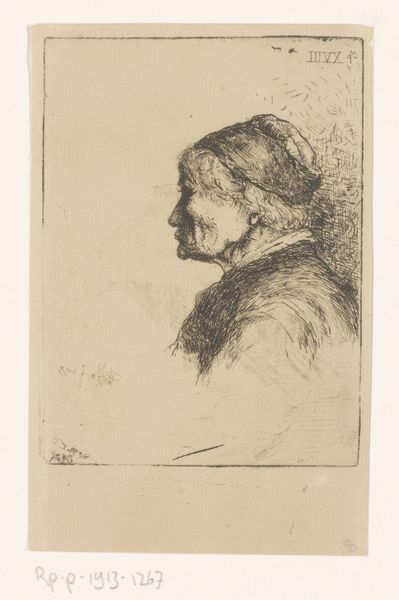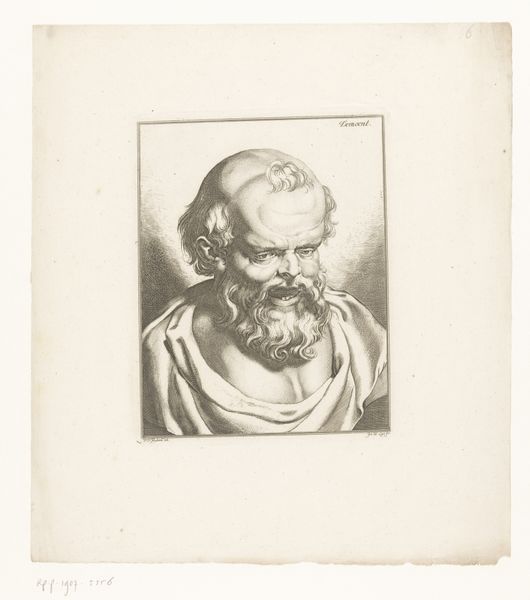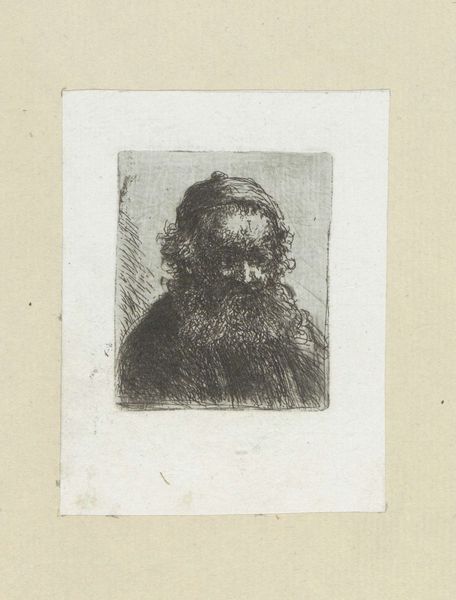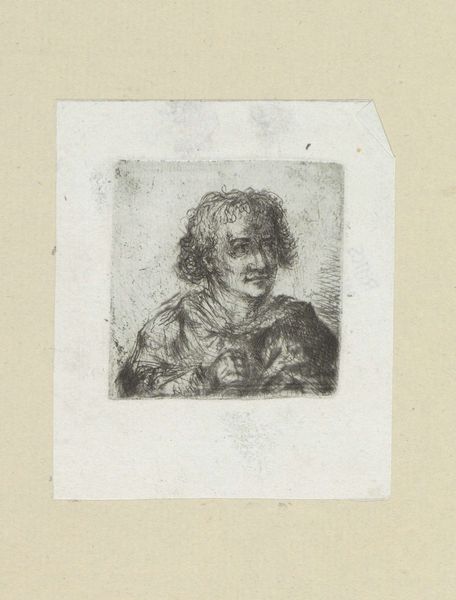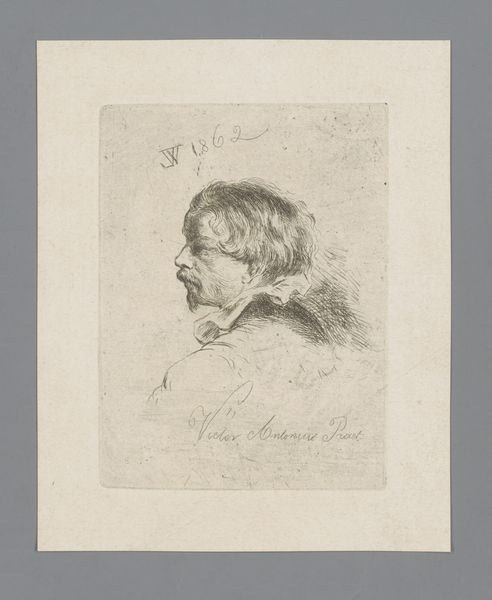
drawing, print, engraving
#
portrait
#
drawing
#
16_19th-century
# print
#
engraving
#
realism
Dimensions: height 95 mm, width 72 mm
Copyright: Rijks Museum: Open Domain
Curator: Immediately striking, isn't it? There's an undeniable intensity in those lines. It almost vibrates. Editor: Yes, an intriguing piece. What exactly are we looking at? Curator: This is "Portrait of an Unknown Man in Historical Costume," an engraving by Willem Linnig II. The Rijksmuseum dates it sometime between 1852 and 1890. It depicts a man in profile, adorned with what seems to be elaborate historical garb. Editor: The costume evokes power, certainly. The feathered hat, the suggestion of armour... it pulls at archetypes of masculinity and authority. I’m immediately interested in who this “unknown man” could represent, and how that resonates within the narratives of 19th-century nationalism. Was he meant to embody a historical figure or perhaps an idealized image of strength for the time? Curator: That's a vital question to unpack. Linnig’s use of engraving to create such an evocative image also speaks to a democratization of portraiture at the time. Was this portraying of historical imagery offering this idealized masculinity to a wider audience through print media? What about gender, class, and social mobility does this portrait reveal? The sharp contrast enhances the details of his clothing while shrouding the face in shadows, a rather complicated dynamic for portraiture, don’t you agree? Editor: I concur, the obscured gaze does add a layer of complexity. It avoids direct confrontation, perhaps suggesting contemplation, maybe even melancholic self-reflection. This invites a focus not only on historical might, which is suggested by the dress, but to his introspective nature too, possibly offering another level to the interpretation of "manhood" in that era. We see the symbols of power on the surface, but are invited to look beyond at a certain type of inwardness, a theme which continues to echo in contemporary work. Curator: Exactly. The choice to present him in historical attire is a powerful symbol. By referencing the past, the work invites us to think critically about present-day identities and the historical forces that have shaped them. Linnig's subject doesn’t appear particularly happy or triumphant— perhaps implying that the historical narrative we attach to these symbols is far more nuanced than expected. Editor: A thought-provoking exploration indeed. It certainly gives you much to ponder. Curator: Definitely. A fruitful intersection of symbols and historical analysis.
Comments
No comments
Be the first to comment and join the conversation on the ultimate creative platform.
